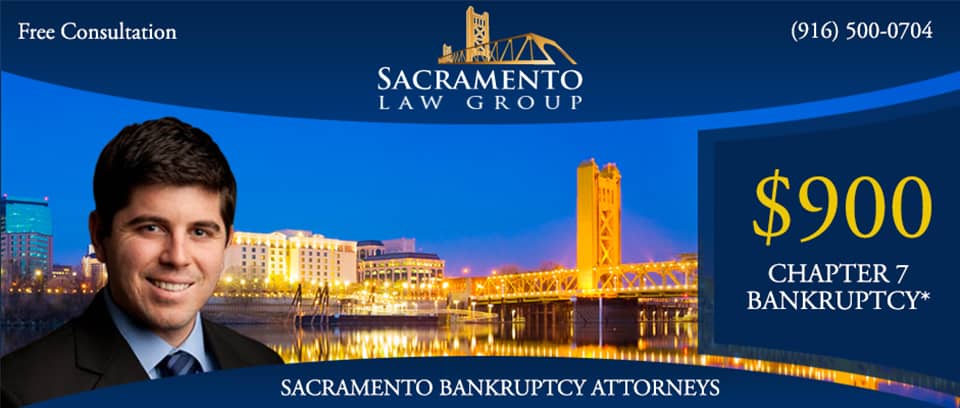Bankruptcy Law
Our clients file chapter 7 or chapter 13 bankruptcy. Chapter 7 bankruptcy can quickly eliminate unsecured debt, but there are income restrictions. Chapter 13 bankruptcy can consolidate debt into a 5 year repayment plan while the client retains property such as a home in foreclosure. The first step toward making this important decision is to call our bankruptcy lawyer at (916) 500-0704 for a free consultation.
The Automatic Stay
Filing for bankruptcy is an important step towards effective debt relief. Once your bankruptcy petition is filed with the United States Bankruptcy Court for the Eastern District of California the automatic stay will come into effect. The automatic stay is an injunction against collection activities that is automatically triggered once your petition is filed with the court. The automatic stay forces creditors to cease collection efforts. For instance, the automatic stay will stop creditors from making collection calls or sending demand letters.
Chapter 7 Bankruptcy
When most people think of bankruptcy they are thinking of chapter 7 bankruptcy. Chapter 7 bankruptcy is usually concluded in a matter of months and has the power of eliminating credit card, medical, and other unsecured debts. However, chapter 7 bankruptcy can have its drawbacks. In chapter 7 bankruptcy property not exempt under California law may be forfeited and sold in bankruptcy. Therefore, individuals with a large amount of non-exempt assets should think twice before filing chapter 7 bankruptcy.
The Chapter 7 Bankruptcy Process
Filing for chapter 7 bankruptcy can help you discharge unsecured debts in a relatively short amount of time. Chapter 7 bankruptcy involves reporting your assets, claiming certain assets up to designated amounts as exempt (meaning that they cannot be sold by the Trustee), submitting your nonexempt assets to liquidation by the Trustee, and receiving a discharge of certain unsecured debts (meaning that you no longer owe these debts).
Qualifying For Chapter 7 Bankruptcy
In order to qualify for chapter 7 bankruptcy your current monthly income as determined by a statutory calculation must be below the California state median income for a household of your size. Alternatively, you can qualify for chapter 7 by passing the “means test.” [Warning, this is complicated] The means test is designed to curb abuse of chapter 7 bankruptcy by those who can afford to repay their creditors over time through chapter 13. The means test is another statutory calculation by which certain monthly expenses are subtracted from your current monthly income to produce “x.” X is then multiplied by 60 (the number of months in a 5 year chapter 13 repayment plan) which produces “y.” You are prevented from filing for chapter 7 bankruptcy if Y is greater than $6,575 or 25% of your nonpriority unsecured debt. You are also prevented from filing chapter 7 if Y is greater than $10,950.
The takeaway from this is that chapter 7 bankruptcy is easier to qualify for if you have very little income over the past 6 months, a large household, or a large amount of secured debt.
The Disadvantages of Chapter 7 Bankruptcy
There are some disadvantages to filing for chapter 7 bankruptcy. First, in chapter 7 bankruptcy your nonexempt property will be sold by the Chapter 7 trustee. While most chapter 7 cases are able to claim all property as exempt pursuant to California bankruptcy exemptions, some people have nonexempt assets such as second homes with equity or several valuable cars. For instance, if own several classic cars free-and-clear, you may lose those cars in chapter 7 bankruptcy. If you have a large amount in nonexempt assets you may want to consider your options in chapter 13 bankruptcy. Second, chapter 7 bankruptcy does not allow the elimination of a second mortgage where there is not equity in the home to secure said mortgage; in contrast, unsecured second mortgages can be stripped-off in chapter 13 bankruptcy. Lastly, chapter 7 bankruptcy will not discharge all unsecured debts. Some debts cannot be discharged in bankruptcy for public policy reasons. For instance, student loans in bankruptcy will not be discharged unless an undue hardship exists.
Chapter 13 Bankruptcy
Filing for Chapter 13 bankruptcy can help you catch up on late mortgage payments and delinquent secured debts over time. Chapter 13 bankruptcy involves a repayment plan that obligates you to pay your disposable income to creditors over 3 to 5 years. In return, certain outstanding debts are discharged at the end of your repayment plan. A critical difference between chapter 13 and chapter 7 is that in chapter 13 you can keep your property whereas in chapter 7 your non-exempt property is sold for the benefit of your creditors. Furthermore, chapter 13 bankruptcy allows people to catch-up on their delinquent long-term debts. This ability to cure defaults on long term debts while retaining property secured by the debt is the primary feature that allows people to keep their homes in chapter 13 bankruptcy while they catch up on their late payments.
To qualify for chapter 13 you must have sufficiently stable income that shows you can meet your repayment obligations. This feasibility requirement means that you must be able to show a stream of income from which you can make your chapter 13 payments.
The primary advantage of chapter 13 is that you can keep your property. Also, chapter 13 usually involves a smaller pre-filing attorney fee since a portion of the total attorney fee is paid over 3-5 years through the chapter 13 plan. The major disadvantage of chapter 13 is that you only receive a discharge once you have completed the repayment plan. Many people fail to complete the repayment plan and consequently do not receive a discharge in bankruptcy.



